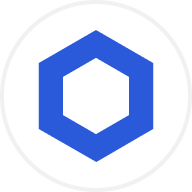RWA Assets Blockchain: Unlocking Trillions in Tokenized Real-World Assets
What Are RWA Assets on the Blockchain?
Real-World Asset (RWA) tokenization refers to the process of converting ownership rights of tangible and intangible assets into digital tokens on a blockchain. These assets can include real estate, art, commodities, stocks, intellectual property rights, and even life insurance policies. By leveraging blockchain technology, RWA tokenization unlocks liquidity, enables fractional ownership, and enhances transparency across traditional sectors.
Benefits of RWA Tokenization
Unlocking Liquidity
RWA tokenization addresses the liquidity challenges of traditionally illiquid markets. For instance, real estate properties, which often require significant capital and lengthy transaction processes, can be tokenized to allow fractional ownership and faster trading. This opens up new opportunities for investors and asset owners alike.
Enhanced Transparency
Blockchain technology ensures that all transactions are recorded on an immutable ledger, providing unparalleled transparency. This is particularly beneficial in industries like art and commodities, where verifying provenance and authenticity is critical.
Fractional Ownership
Tokenization enables assets to be divided into smaller units, allowing for fractional ownership. This democratizes access to high-value assets, making them accessible to a broader range of investors who may not have the capital to purchase entire assets.
Operational Efficiency
Blockchain reduces settlement times, automates processes, and increases operational efficiency. These improvements make tokenized RWAs attractive to institutional investors and traditional financial intermediaries, streamlining operations and reducing costs.
Institutional Adoption and Major Players
Financial Institutions Leading the Charge
Prominent financial institutions such as BlackRock, Goldman Sachs, Fidelity, and Franklin Templeton are actively exploring RWA tokenization. These organizations are launching tokenized funds, experimenting with digitized bonds, and integrating blockchain technology into their operations to stay ahead in the evolving financial landscape.
Case Studies
Chainlink’s Partnership with UBS and DigiFT: Chainlink has collaborated with UBS and DigiFT to automate tokenized fund distribution and lifecycle management, reducing manual errors and operational costs.
Ju.com and xBrokers: These platforms are pioneering stock RWA mechanisms, enabling on-chain shareholder registration, dividends, and voting rights.
Integration of RWAs into DeFi Protocols
Tokenized assets are increasingly being integrated into Decentralized Finance (DeFi) protocols. These assets serve as collateral for lending and borrowing, creating new opportunities for liquidity and financial innovation. For example, tokenized real estate or commodities can be used to secure loans within DeFi ecosystems, bridging the gap between traditional finance and blockchain-based solutions.
Regulatory Frameworks and Compliance Challenges
Importance of Regulatory Clarity
Regulatory clarity is essential for the mainstream adoption of RWA tokenization. Frameworks such as the EU’s MiCA regulation and ongoing legislative efforts in the U.S. are paving the way for compliance, fostering trust among institutional and retail investors.
Challenges in Regulation
Despite progress, regulatory fragmentation remains a significant challenge. Different jurisdictions have varying rules, complicating global adoption. Additionally, technological scalability and interoperability between blockchain platforms require further development to ensure seamless integration.
Tokenization of Specific Asset Classes
Real Estate
Tokenized real estate allows investors to purchase fractional shares of properties, reducing entry barriers and increasing market liquidity. This innovation is particularly appealing to retail investors seeking exposure to the real estate market.
Art and Collectibles
Blockchain ensures the authenticity and provenance of tokenized art, making it easier to trade high-value collectibles. This transparency builds trust among buyers and sellers in the art market.
Commodities
Tokenized commodities such as gold and oil provide investors with a secure and transparent way to trade physical assets. This reduces the risks associated with traditional commodity trading.
Stocks
Platforms like Ju.com and xBrokers are enabling stock RWA mechanisms, offering on-chain shareholder registration, dividends, and voting rights. This innovation enhances the efficiency and accessibility of equity markets.
Market Projections and Growth Potential
The market for tokenized RWAs is projected to grow exponentially, with estimates reaching trillions of dollars by 2030. This growth is driven by increasing institutional adoption, technological advancements, and the integration of RWAs into DeFi protocols. As more industries recognize the benefits of tokenization, the market is expected to expand further.
Impact on Traditional Financial Intermediaries
RWA tokenization is poised to disrupt traditional financial intermediaries by reducing settlement times, automating processes, and increasing operational efficiency. Banks and other institutions are adapting to this shift by exploring blockchain-based solutions to remain competitive in a rapidly evolving financial ecosystem.
Emerging Markets and Financial Inclusion
Tokenization extends beyond traditional assets to include innovative categories such as agricultural commodities, carbon credits, and intellectual property rights. For example, Farmway Technologies is using blockchain for tokenized agricultural financing, promoting climate-smart agriculture and green capital investment. This innovation fosters financial inclusion by providing access to capital in underserved markets, empowering local economies.
Challenges and Future Outlook
Interoperability and Scalability
Interoperability between blockchain platforms and technological scalability are critical challenges that need to be addressed for widespread adoption. Solutions that enable seamless communication between different blockchains will be key to unlocking the full potential of RWA tokenization.
Regulatory Fragmentation
The lack of a unified global regulatory framework poses hurdles for the seamless integration of RWAs into the financial ecosystem. Collaborative efforts between governments and industry stakeholders are necessary to create standardized regulations.
Optimistic Future
Despite these challenges, the future of RWA tokenization is promising. With increasing institutional adoption, regulatory advancements, and technological innovation, tokenized assets are set to transform traditional industries and unlock new opportunities for investors worldwide. The next decade will likely see significant growth in this space, reshaping the global financial landscape.

